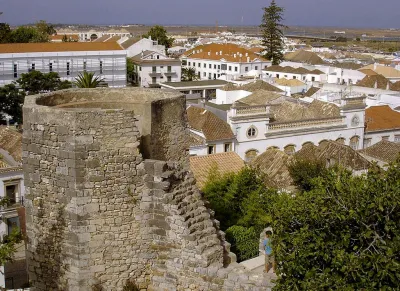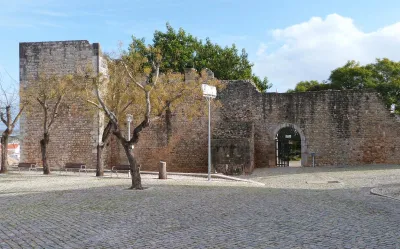
Tavira Castle Peter Broster CC BY-SA
Castelo de Tavira Miguel Vieira CC BY-SACastelo de Tavira
There is no entrance fee to explore the well-preserved ruins of Tavira Castle and visitors will be rewarded with a well-tended garden within the walls of the ruin and some exceptional views of the town and river. You won't find anything in the way of guides here, and very few signs explaining much about the castle, but it can be a pleasant place to sit and listen to the occasional busker while taking in the views.
The castle has a turbulent history. It is thought that the Phoenicians had a settlement somewhere around this spot as far back as the 7th or 8th century BC. The Moors who later occupied this area built a stronghold here, although the town was conquered by the Portuguese in June 1239.
The oldest part of the current structure is thought to date back to the 12th or 13th century. After the Moors were driven out, the castle played a role in the defence against North African pirates who raided the nearby coastal areas. The building was significantly damaged in the devastating earthquake of 1755.
A number of stories surround these romantic ruins, including the legend that on the night of Midsummer's Day, (24th June) the ghost of the long-lost daughter of the Moorish castle governor, defeated in 1239, is heard to cry out in the darkness.
The castle is not far from the town of Tavira's historic centre, from which signposts direct visitors to the site.
Address
Largo Abu-OtmaneTavira8800-306Attraction type

Tavira travel guide »
Tavira is one of the gems of the eastern Algarve. Straddling the River Gilão and the River Segua, its gentle charm and predominantly low-rise architecture set it aside from other resorts in the region. Sometimes referred to as the Venice of the Algarve, it boasts a seven-arched Roman bridge, some fine Renaissance architecture, numerous churches, tree-lined squares and a certain romantic air. …